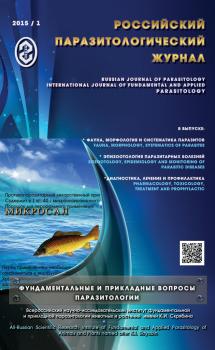Objective of research. To elaborate a framework for integrated protection of agricultural crops from oat, sugar beet, Golden potato, alfalfa and clover nematodes. Materials and methods. The effectiveness of different anti-nematode measures was studied in 1991-2016 in Vinnyza, Kiev, Sumy, Chernigov and other regions of Ukraine. As research material served samples of soil, plants; eggs, larvae, imago; beet, oat, Golden potato, alfalfa and clover cyst nematodes. Preparation of temporary and permanent slides, determination of the species composition of cyst nematodes were carried out by standard methods [3, 6]. Results and discussion. The framework of integrated protection of agricultural crops from oat, sugar beet, Golden potato, alfalfa and clover nematodes has been elaborated. To prevent mass reproduction of cyst-forming nematodes, the saturation of crop rotations with host plants must not exceed 40% — with cereal grains; 20% — beet and oilseed Brassica (canola, radish, and mustard); 15% — potatoes; 20% — perennial legumes. Involvement of crops and green manure in the by-products cycle has a positive effect on the level of soil fertility and activation of life activity of natural antagonists of Heteroderidae
cyst nematodes, host plants, crop rotations, a complex of protective measures.
Введение
Цистообразующие нематоды известны еще со второй половины прошлого столетия как одна из причин «почвоутомления». Микроскопические размеры и очаговое распространение существенно усложняют их своевременное выявление, а стадия покоя - циста, обеспечивает многолетнее выживание потомства при неблагоприятных условиях. Основным средством контроля численности гетеродерид прежде было научно обоснованное чередование сельскохозяйственных культур. Однако переход на рыночное ведение сельского хозяйства существенно изменил структуру посевных площадей, привел к изъятию из агроценозов ряда ценных в фитосанитарном отношении культур и как следствие, к несбалансированному их общему чередованию. В условиях узкой специализации растениеводства, резкого сокращения норм внесения традиционных органических, ограниченного использования минеральных удобрений, химических средств защиты и упрощению в целом технологий выращивания сельскохозяйственных культур, отмечается тенденция к ухудшению фитосанитарного состояния агроценозов [1, 2, 4, 5].
1. Babich A.G., Babich A.A. Integrated protection of sugar beet from beet cyst nematode. Rossiyskiy Parazitologicheskiy Zhurnal [Russian Journal of Parasitology], 2014, no. 4, pp. 117-124.
2. Butorina N.N., Zinov’eva S.V., Kulinich O.A. Prikladnaya nematologiya [Applied nematology]. M., Nauka, 2006. 350 p.
3. Kir’yanova E.S., Krall’ E. L. Paraziticheskie nematody rasteniy i mery bor’by s nimi. [Plant-parasitic nematodes and measures of fight against them]. L., 1969, vol. 1. 447 p.
4. Sagitov A.O. Perevertin K.A. Fitogel’mintologija - sel’skohozjajstvennomu proizvodstvu [Phytohelminthology for the agricultural production]. Almaty, Publ. Kainar, 1987. 183 p.
5. Skarbilovich T.S. Sugar beet cyst nematode and measures of fight against it. Trudy VIGIS [Proc. of VIGIS]. M., 1960, vol. 8, pp. 9-207.
6. Shesteperov A.A., Shavrov G.N. Vyyavlenie i uchet fitogel’mintozov [Diagnosis and registration of phytohelminthiasis].Voronezh, 1984. 86 p.





